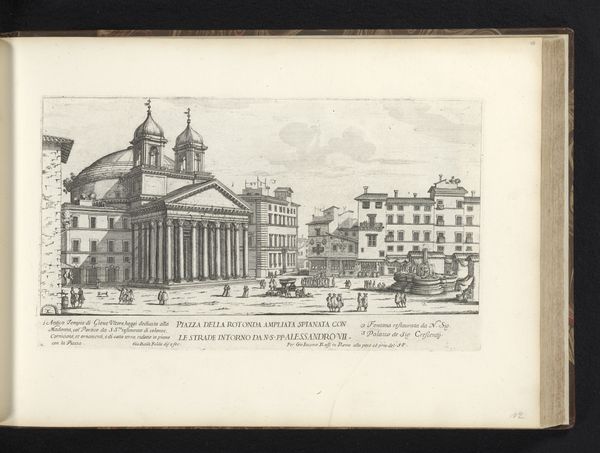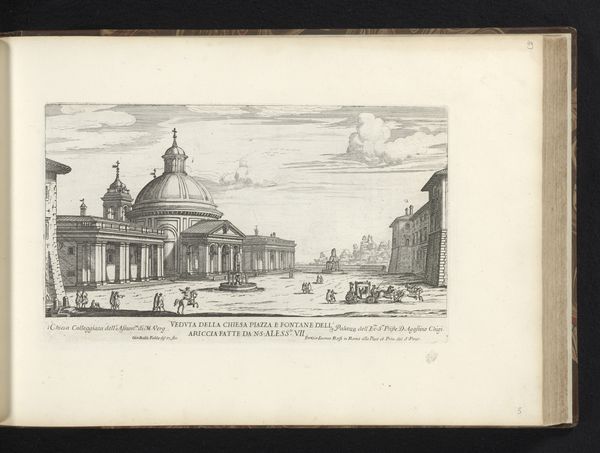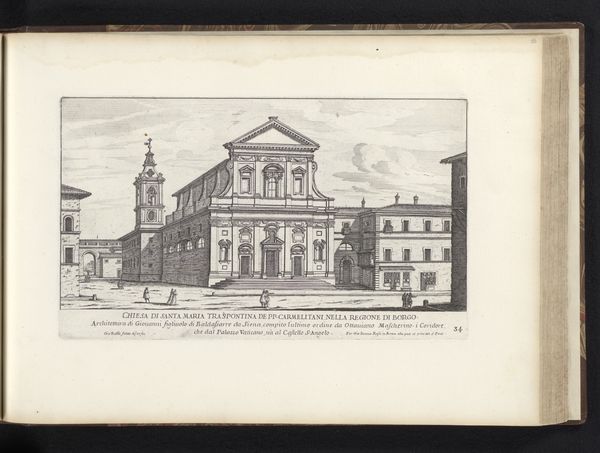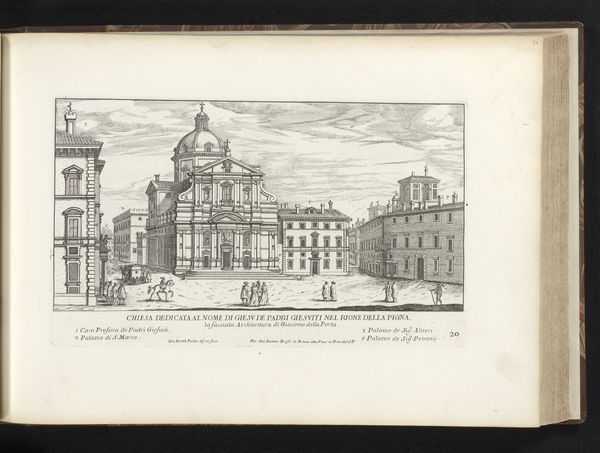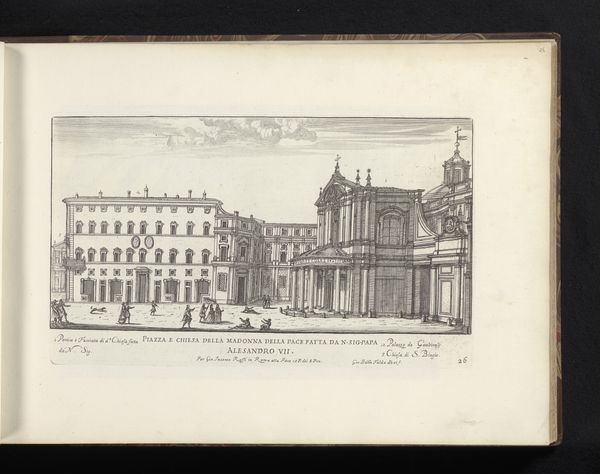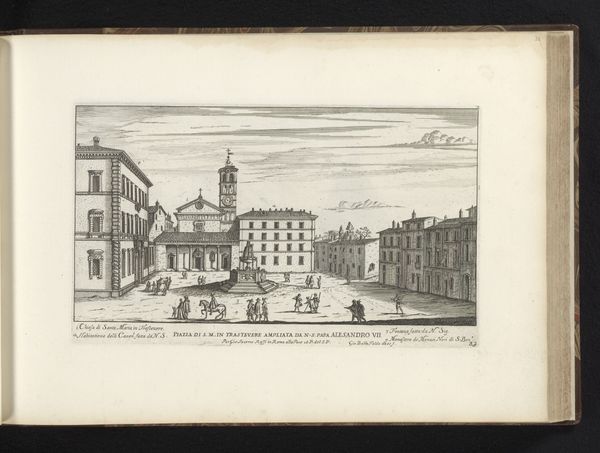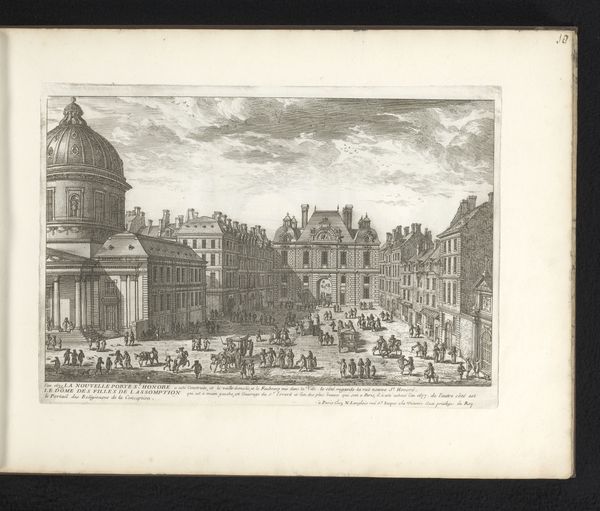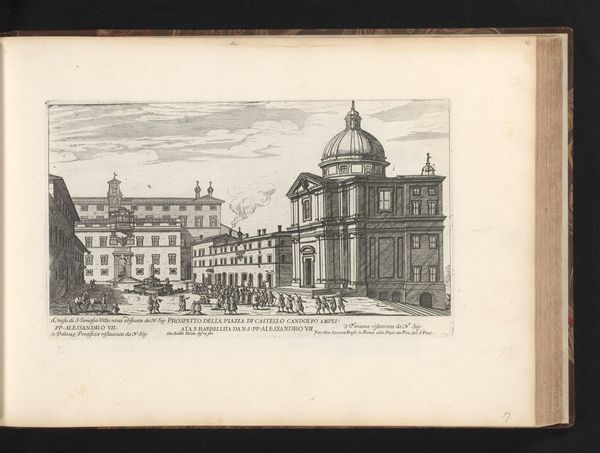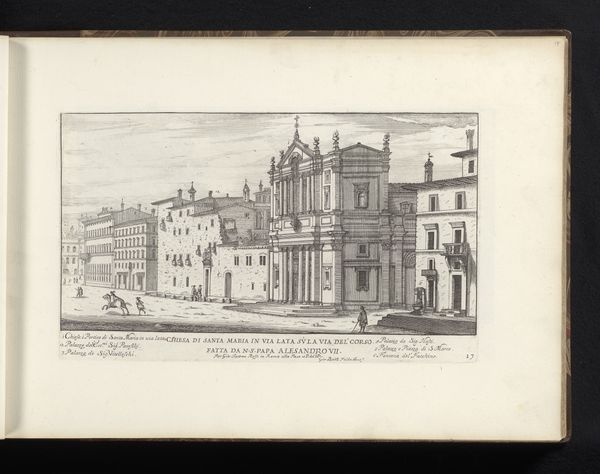
drawing, print, etching, paper, engraving
#
drawing
#
baroque
#
pen drawing
# print
#
etching
#
paper
#
cityscape
#
engraving
Dimensions: height 174 mm, width 289 mm
Copyright: Rijks Museum: Open Domain
This is Giovanni Battista Falda’s "Piazza della Rotonda en het Pantheon te Rome," an engraving dating back to the late 17th century. The print presents a symmetrical composition, dominated by the Pantheon's architectural mass, where the play of light and shadow creates a sense of depth. The regular geometry contrasts with the figures populating the piazza, bringing a human element to the scene. Falda skillfully employs line and perspective to create a sense of space. The meticulous details, from the texture of the building facades to the patterns on the paving stones, speak to the engraver's command of his medium. The buildings' shadows, rendered through dense clusters of lines, give form to the architectural space. The Pantheon is not merely a structure but a nexus where classical ideals of order and harmony meet the bustling life of Rome. It serves as a visual representation of a culture grappling with its historical inheritance. Notice how the artist uses structure to invite contemplation about history, space, and human experience.
Comments
No comments
Be the first to comment and join the conversation on the ultimate creative platform.
